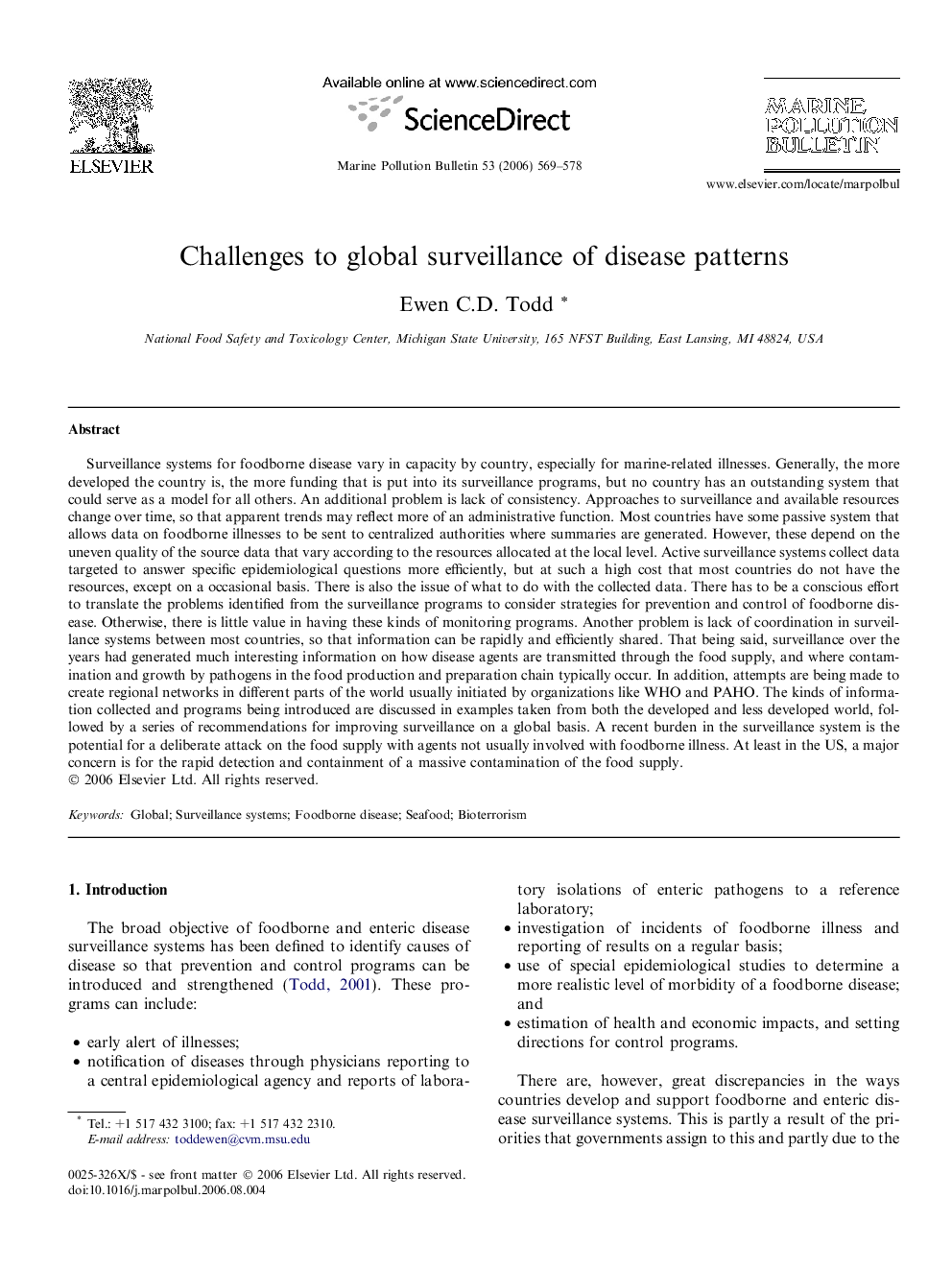| کد مقاله | کد نشریه | سال انتشار | مقاله انگلیسی | نسخه تمام متن |
|---|---|---|---|---|
| 4477660 | 1622774 | 2006 | 10 صفحه PDF | دانلود رایگان |

Surveillance systems for foodborne disease vary in capacity by country, especially for marine-related illnesses. Generally, the more developed the country is, the more funding that is put into its surveillance programs, but no country has an outstanding system that could serve as a model for all others. An additional problem is lack of consistency. Approaches to surveillance and available resources change over time, so that apparent trends may reflect more of an administrative function. Most countries have some passive system that allows data on foodborne illnesses to be sent to centralized authorities where summaries are generated. However, these depend on the uneven quality of the source data that vary according to the resources allocated at the local level. Active surveillance systems collect data targeted to answer specific epidemiological questions more efficiently, but at such a high cost that most countries do not have the resources, except on a occasional basis. There is also the issue of what to do with the collected data. There has to be a conscious effort to translate the problems identified from the surveillance programs to consider strategies for prevention and control of foodborne disease. Otherwise, there is little value in having these kinds of monitoring programs. Another problem is lack of coordination in surveillance systems between most countries, so that information can be rapidly and efficiently shared. That being said, surveillance over the years had generated much interesting information on how disease agents are transmitted through the food supply, and where contamination and growth by pathogens in the food production and preparation chain typically occur. In addition, attempts are being made to create regional networks in different parts of the world usually initiated by organizations like WHO and PAHO. The kinds of information collected and programs being introduced are discussed in examples taken from both the developed and less developed world, followed by a series of recommendations for improving surveillance on a global basis. A recent burden in the surveillance system is the potential for a deliberate attack on the food supply with agents not usually involved with foodborne illness. At least in the US, a major concern is for the rapid detection and containment of a massive contamination of the food supply.
Journal: Marine Pollution Bulletin - Volume 53, Issues 10–12, 2006, Pages 569–578